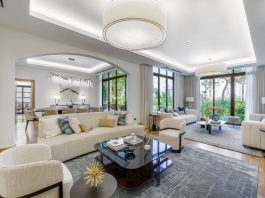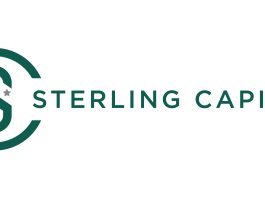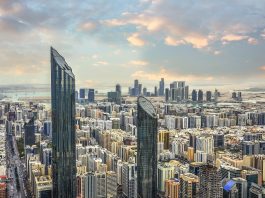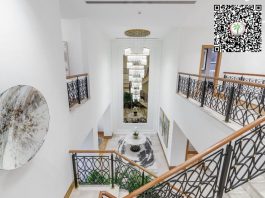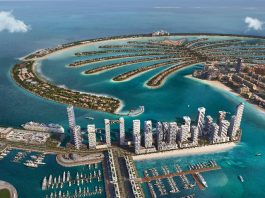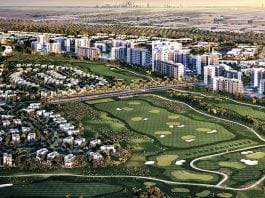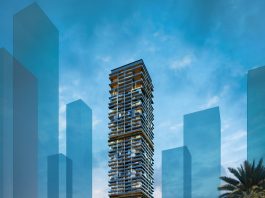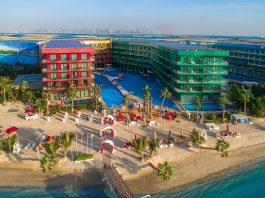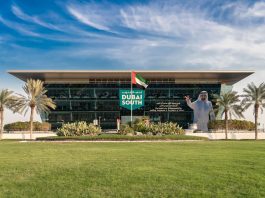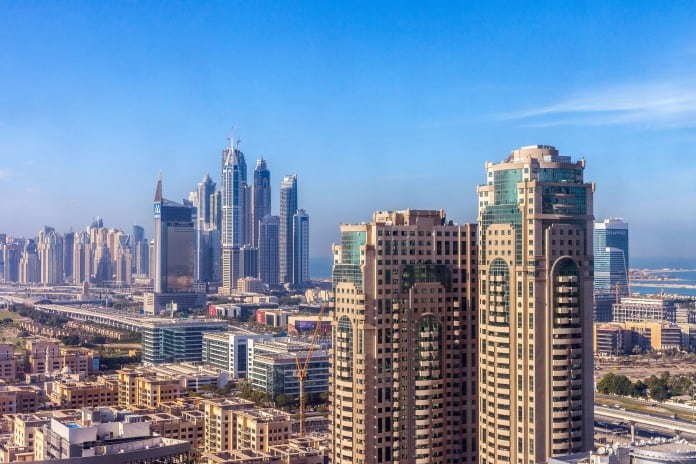
Knight Frank is pleased to announce the release of its UAE Market Review and Forecast 2021.
The report provides an overview and outlook of the key real estate sectors including the residential, office, hospitality, industrial and retail sectors in Abu Dhabi and Dubai.
Taimur Khan, Associate Partner at Knight Frank Middle East, stated: “Despite being presented with an unprecedented set of challenges in 2020, real estate markets across the UAE have proved to be remarkably resilient. Whilst both developers and investors recognise the downside risks bought about by the pandemic, they also understand that these are short to medium term risks in nature, rather than a long term shifts in market fundamentals. More so, regulatory changes from both the federal government and local governments have significantly bolstered these fundamentals over the last year. The easing of a number of geopolitical issues over the course of 2020 will also further strengthen market fundamentals.
As a result, despite some of the intrinsic challenges which real estate market faces, we remain optimistic in our outlook and believe there are pockets of opportunities across a range of market sectors.”
Macroeconomic overview
As the COVID-19 pandemic raged, we saw social mobility norms curtailed in a manner never experienced before. Almost uniformly, the world came to a standstill, with flights grounded, businesses shuttered and curfews enacted in large swathes across the world.
Such a seismic shock would also go on to have major impacts on global economic activity, where it is estimated that global GDP decreased by 3.5% in 2020. In the UAE, initial estimates show that GDP is expected to contract by 7.7% in 2020; a trend underpinned by the fact its core economic sectors, the hydrocarbon, tourism and retail sectors, are arguably amongst the most affected by the pandemic.
However, despite this shock, the UAE’s commendable handling of the pandemic and fiscal and monetary stimulus plans have seen recovery ensue in these and other sectors.
Looking ahead, the UAE’s GDP is forecast to expand by 1.1% in 2021 and by 4.0% in 2022, according to data from Oxford Economics. During this period, GDP growth rates between Abu Dhabi and Dubai are initially expected to fragment, where Abu Dhabi and Dubai are expected to record growth rates of 1.6% and 5.4% in 2021, before converging to 5.3% and 5.0% in 2022 respectively.
Residential
Residential sales prices in Abu Dhabi fell on average by 2.0% in 2020, down from 7.5% a year earlier. Whilst over this period we have seen average apartment prices fall by 3.0%, average prices for villas have increased by 2.0%, the first annual increase in prices since 2014.
Residential rents in Abu Dhabi continued to soften in 2020, with average rents decreasing by 4.3%. Over this period, average apartment and villa rents fell by 4.6% and 2.6% respectively.
Despite Dubai seeing some of the most stringent lockdown measures in the UAE throughout the early stages of the pandemic, residential demand was relatively resilient in 2020. Initial data shows that almost 33,000 residential units transacted in 2020, down 16.4% compared to 2019. This softer level of demand was largely underpinned by a significant drop-off in off-plan sales, which fell by 32.1% in 2020. Secondary market sales on the other hand increased by 7.2% over the same period and for the first time in five years accounted for the largest share of activity in the market.
Average mainstream prices in Dubai fell by 7.1% in the 12 months to December 2020. Price falls were largely concentrated in the apartments segment of the market, where prices fell by 8.0%, whereas villa prices were relatively stable. Average prices for new-build apartments fell on average by 4.0% in the year to December 2020, with softer demand for off-plan properties putting further pressure on prices.
Whilst Dubai’s prime residential market saw prices decrease by 4.2% in the year to December 2020, we are beginning to see signs of a recovery in price performance in some prime sub-markets. For example in the six months to December 2020, apartment and villa prices on the Palm Jumeirah increased by 5.1% and 9.4% respectively. Over the same period, villa prices in District One have increased by 3.5%. Other prime markets such as Downtown Dubai and Emirates Hills are also showing similar signs of improvement in market performance. More so, in contrast to the mainstream market, prime transaction volumes increased by 7.9% in 2020 compared to 2019.
Residential Outlook
Taking a longer-term view on the market, we expect new supply levels to begin to ease from 2022 in Abu Dhabi and from late 2023 in Dubai. In Abu Dhabi and Dubai, new launches in 2020 were at the lowest levels since 2004 and 2012 respectively. In Abu Dhabi, the number of residential launches are expected to increase over the coming year and given the relatively restrained levels of completions over recent years, we expect this not to have a drastic impact on the market. In Dubai, the number of residential launches are expected to remain materially below the average seen over recent years.
Assuming these trends remain constant, mortgage rates remain at or around historic lows and loan-to-value ratios are kept at current levels, we are likely to see prices begin to bottom out during 2022. In prime markets with limited levels of new supply, we are likely to see prices being to recover six-months prior to this.
Office Market
In Abu Dhabi’s occupier market, we continue to see occupiers take flight to quality, as they look to take advantage of softer market conditions.
In the year to Q4 2020, Prime rents in Abu Dhabi have increased by 2.3% to an average of AED 1,660 (sq.m/p.a.). Over the same period, Grade A rents fell by 3.8% to AED 1,203 (sq.m/p.a.). and Citywide rents by 3.0% to AED 939, (sq.m/p.a.). The average vacancy rate in Abu Dhabi as at Q4 2020, was registered at 21.9%.
As at Q4 2020, average Prime rents in Dubai registered at AED 209 (sq.ft./p.a.), down 3.0% compared to the same period a year earlier. Grade A office rental rates have seen rates of declines moderate on average in the 12-months to Q4 2020, where rents fell by 4.0%, registering at an average rate of AED 129 (sq.ft./p.a.). Citywide rents declined by 6.9% over the same period to an average of AED 99 (sq.ft./p.a.). Vacancy in Dubai’s office market is estimated to have increased by 5.5% in 2020 to 24.3%.
The vast majority of demand in Dubai’s corporate occupier market continues to stem from existing market participants looking to consolidate operations or improve the quality of their space. In response to this, landlords, in an attempt to retain tenants, are offering competitive rent-free periods.
From a supply perspective in Abu Dhabi, over the next two years we expect a further 356,000 square metres of space to be added, bringing the total GLA to 4.10 million square metres by 2023. In Dubai, as at 2020, an estimated 241,000 square metres of GLA was delivered, bringing the total GLA to 10.2 million square metres. The vast majority of this new supply is classed as Grade A and as a result, we are likely to see further pressure be exerted on rents in this segment of the market.
Retail Market
Prior to the onset of the pandemic, the UAE’s retail sector was already under considerable
Pressure and therefore, the onset of the pandemic has pushed many retailers to the brink and beyond.
As at 2020, in the UAE, annual resident based retail spending is forecast to have declined by AED 8.2 billion. Around 47% of this decline is expected to be attributable to Dubai, where resident based retail spending is expected to decrease by 4.7%.
As at 2020, in the UAE, annual resident based retail spending is forecast to have declined by AED8.2 billion. Around 47% of this decline is expected to be attributable to Dubai, where resident based retail spending is expected to decrease by 4.7%. In Abu Dhabi, resident based retail spend is expected to decline by AED2.3 billion, equating to a decline of around 4.0%.
However, whilst resident based spending is important to the market, for certain markets, particularly Dubai, tourism spending accounts for a significant portion of total demand. As a result, it is not surprising that we continue to see footfall levels sit considerably below pre-pandemic baselines. Data from Google’s Mobility Index shows that, post lockdown to the end of 2020, the total visitor numbers to Abu Dhabi and Dubai’s retail and recreational establishments on average sat at 31.0% and 36.2% below their pre-pandemic baselines.
Looking ahead, reduced footfall levels and the fast-tracked adoption of e-commerce over the
last year will continue to provide considerable headwinds to the UAE’s retail sector, however, Physical retail destinations, particularly those supported by demand drivers, will continue to attract both retailers and footfall.
However, with margins shrinking and competition increasing we are likely to see further pressure exerted on rents. In 2020, in Abu Dhabi has seen 87,000 square metres of GLA being added, taking the total GLA to 1.99m square metres. By 2024, we expect this to increase to 2.70m square metres of GLA. During 2020, Dubai has seen 202,000 square metres of GLA added, bringing its total GLA to 3.86m square metres.
Hospitality Market
The COVID-19 pandemic has presented the hospitality market with an unprecedented set of challenges. The sector was not only the first to be affected but to date has undoubtedly been the hardest hit. In addition to this, it is also most likely to see long-lasting changes which have been bought about purely by the pandemic.
First, we have seen activity in the global travel market decline dramatically. In 2020, the total number of flights globally fell from its 2019 average of almost 115,000 per day to lows of around 28,000 in the early stages of the pandemic. As lockdown restrictions around the world eased and traveller confidence returned, activity has partially recovered to an average of almost 70,000 flights per day in 2020, representing a decline of 39.1% from a year earlier.
Despite efforts to reopen, visitation remains materially below pre-pandemic norms. Using Dubai as a proxy for demand shows that, visitation in the year-to-date to November 2020 is estimated to total around 5.37m, down 64.2% year-on-year. Therefore, it is unsurprising that we have seen performance decline across almost every Key Performance Indicator. Year-on-Year in the year to date December 2020, citywide RevPARs in the UAE have fallen between 8.5% and 44.6%.
On a broader UAE level, looking at performance data since the reopening of borders in July to December 2020, paints a significantly better picture. Here we have seen the UAE’s Average Daily Rate (ADR) increase by 68.4% and occupancy rates increase by 29.7 percentage points, resulting in Revenue per Available Room (RevPAR) increasing by 201%.
Looking ahead, despite the drive to inoculate the global population we are still not expecting tourism being able to return in a meaningful manner until the latter part of 2022.
The rescheduled Expo 2020 will help bolster demand, although visitation is unlikely to match the pre-pandemic expectations of 25 million visitors. Despite challenging market conditions, asset owners understand that this is a short-term shock, rather a long-term structural change to the market. As a result, given the sector’s favourable long term outlook and investors’ extended investment horizons, where investment decisions are more closely correlated with the longer term outlook, investment in the sector will remain steadfast.
Industrial Market
The UAE’s industrial market can largely be singled out as one of the few sectors to benefit from the pandemic, where demand has remained strong in both Free Zone and non-Free Zone locations throughout 2020.
Availability of institutional quality assets is still limited in the UAE which poses a significant challenge to the development of the market. This is the case in Free Zone and non-Free Zone locations alike, where many occupiers are looking to consolidate operations and increase the quality of space they occupy. In non-Free Zone locations this trend is particularly acute in the standalone warehouse segment of the market where vacancy rates now stand below 5%. More so, in these onshore locations, this demand largely stems from changing consumption patterns where there are now a growing number of requirements from multi-channel retailers looking to improve their last mile delivery networks.
With the market seeing high levels of non-institutional grade stock and institutional grade market remaining tenant favourable, average headline rents in Abu Dhabi and Dubai fell by 9.4% and 17.6% in the year to Q4 2020.
Looking ahead, we expect that average rents are likely to soften further over the coming six months before we see a floor in rental rates. With the 100% foreign ownership legislation now in effect, consolidation of space is likely to continue. This will not only drive demand for larger sites, but is likely to contribute to rents softening.


